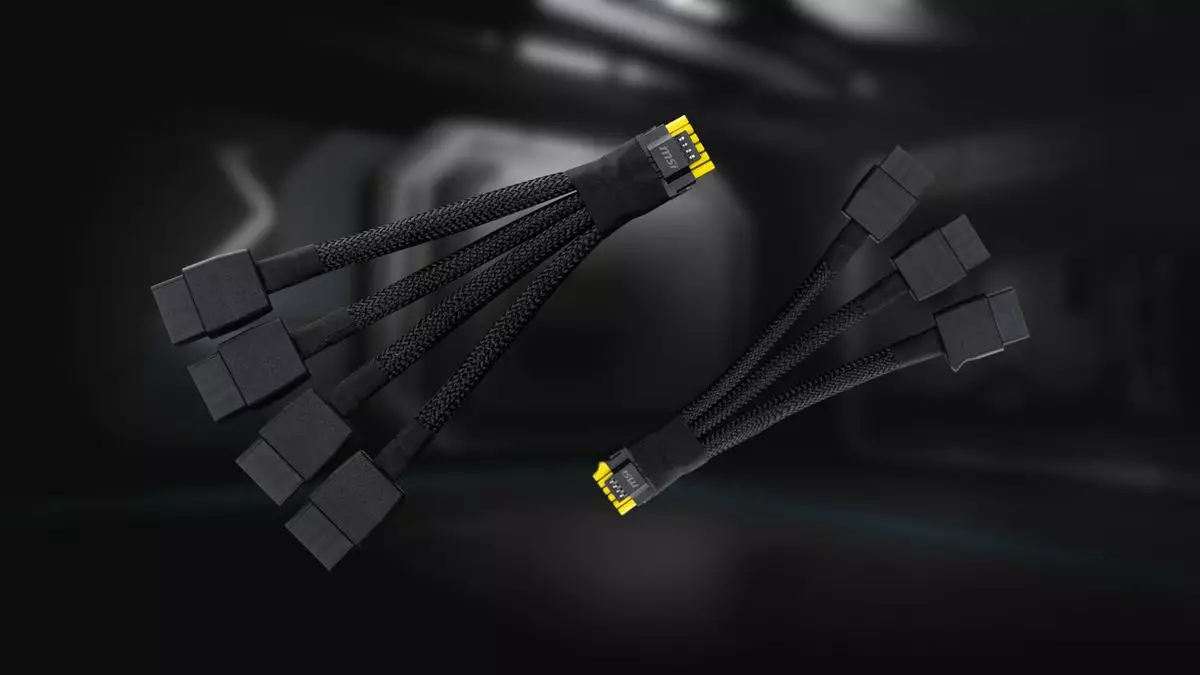As graphics card technology advances at a rapid pace, so do the challenges associated with higher power requirements. The release of the NVIDIA RTX 4090 was a landmark moment in gaming graphics, but it was also marred by a problematic power connector issue—something that raised concerns among potential buyers and may have deterred some from making the investment. Enter MSI with its innovative solution: a new adapter cable designed to address power connection woes head-on, providing both enhanced safety and peace of mind for users.
When the RTX 4090 launched, it came with a stunning price tag and breathtaking performance. However, the GPU suffered from a troubling defect—the tendency for power cables to melt if not securely connected. This was not merely an aesthetic concern but posed real risks of damaging components or even causing fires. A combination of factors contributed to this issue: a poor design in the 12VHPWR socket, substandard cables from third-party manufacturers, and a general lack of clarity when it came to ensuring a proper connection.
This melting issue, often dubbed “meltdown” by consumers, cast a shadow over the impressive capabilities of the RTX 4090. As a result, buyers were left wary. When speculating over the future of graphics cards, this incident created an evolving narrative of skepticism and caution. The upgrade to the RTX 50-series cards has only intensified this conversation, especially with the RTX 5090 poised to require up to 150 watts more power than its predecessor.
Fortunately for consumers, the RTX 50-series promises a brighter future with revamped power connections. The revised 12V-2×6 connector has been engineered with new pin lengths, ensuring that the GPU can only draw maximum power when the cable is fully inserted. This clever design addresses many of the problems that users encountered with earlier models, thereby enhancing safety and reliability.
To further reduce any lingering fears about power management, MSI has stepped up its game by incorporating an innovative adapter cable system in its Blackwell GPUs. The RTX 5090, RTX 5080, and RTX 5070 Ti models will all feature an easily recognizable indicator for proper cable seating: the adapter will have bright yellow plastic surrounding the power pins. If users can still see the yellow after connecting the cable, they know they haven’t secured the connection fully.
This thoughtful feature is not merely a gimmick but a practical solution designed to eliminate guesswork during installation. The importance of correct power connections cannot be overstated, especially when considering that the RTX 5090 draws an astounding 575 watts. Such substantial power demand necessitates an equally robust power delivery method.
While other manufacturers have experimented with advanced technologies for addressing connection issues—ranging from warning lights to complex installation processes—MSI’s straightforward approach has undeniable appeal. Their adapter cable system is not just easy to understand but practically reduces the chances of user error. The mantra “if you can see yellow, it ain’t gonna be mellow” serves as an effective and memorable reminder that something is amiss.
By simplifying the connection process, MSI allows users to focus more on what truly matters: the experience of superior gaming performance that these latest graphics cards promise. Aiming to alleviate concerns surrounding drawing nearly 50 amps through small connectors, MSI’s focus on safety can ultimately build trust among consumers who may have been apprehensive about diving into high-end components.
As technology continues to advance, the demand for power and performance in graphics cards will only intensify. The issues faced by the RTX 4090 serve as a valuable lesson for the industry, emphasizing the critical need for secure power connections. MSI’s new adapter cable system for the RTX 50-series is a compelling response to past shortcomings, aiming not only to improve user experience but also to ensure safety. As gamers look to the future of high-end graphics, a renewed level of confidence in power connections may very well help propel NVIDIA’s latest offerings to new heights—no melting cables required.

